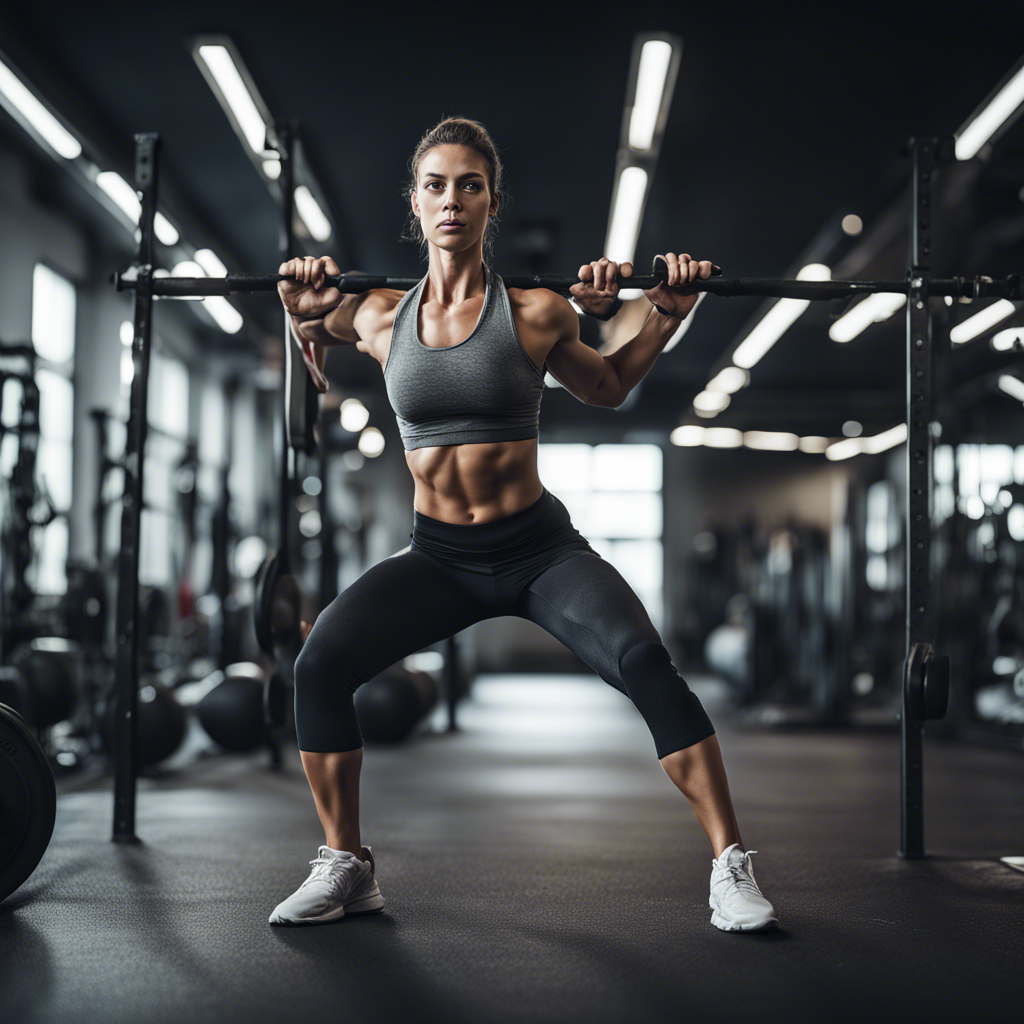Exploring the Benefits of Functional Training for Everyday Fitness
In the quest for optimal health and fitness, many have turned to functional training as a key component of their workout routines. This training methodology isn’t just about lifting the heaviest weights or running the fastest miles; it’s about training your body to handle real-life situations with greater ease and efficiency. By integrating movements that mirror daily tasks, functional training enhances everyday fitness, making common actions more comfortable and less injury-prone.

Functional training panoply extends to a wide variety of exercises designed to improve daily activities. Unlike traditional strength training, which often isolates muscles, functional fitness exercises engage multiple muscle groups simultaneously, encouraging coordination, balance, and mobility. This holistic approach to body conditioning equips individuals not only with the strength to perform daily tasks but also with the flexibility to handle the unexpected twists and turns that life throws their way.
The Essence of Functional Training
Foundations of Functional Fitness
Understanding the core principles of functional training is essential for anyone looking to embrace this exercise philosophy. At its heart, it focuses on movements that mimic actions taken in everyday life. These tasks may include lifting groceries, climbing stairs, or getting in and out of the car. The exercises create a comprehensive workout plan aiming to improve multiple aspects of fitness, such as strength, balance, and coordination.
Equipped with this mindset, individuals find that these exercises not only target physical abilities but mental preparedness as well. For example, a squat is not just a lower body exercise in functional training; it mimics the action of sitting down and standing up, a task repeated multiple times throughout the day. By mastering such basic movements, the benefits of functional training ripple through every facet of daily life.
Why Core Strength Matters
The core plays a pivotal role in functional training, acting as the central hub that connects the upper and lower body. A strong core facilitates stability, improves posture, and enhances overall body strength. Exercises that target core muscles are integral to a functional workout plan, which often includes planks, bridges, and rotational movements.
Think of functional core strengthening as laying the foundation for a more resilient body. With advanced fitness gadgets for serious athletes, tracking improvements and tailoring exercises to individual needs become possible, allowing even veterans of fitness to discover new challenges and growth opportunities. By focusing on core-centered exercises, individuals can significantly improve their performance in both gym and daily tasks.
The Flexibility Factor
Flexibility is often an overlooked component of fitness that can dramatically affect one’s quality of life. By emphasizing movements that enhance flexibility, functional training helps prevent injuries and aids in recovery after workouts. Stretching exercises, dynamic warm-ups, and yoga poses are seamlessly integrated into functional fitness routines, promoting elasticity in muscles and joints.
For instance, exercises that involve reaching, bending, and twisting not only enhance flexibility but also simulate actions like picking up objects or securing a seatbelt. This adaptability empowers individuals to move freely and confidently in their daily lives, reducing the risk of strains and sprains.
Integrating Functional Training into Daily Routines
Structured Functional Fitness Exercises
Creating a well-rounded functional workout plan is essential for anyone looking to optimize their physical abilities for daily tasks. This plan should balance elements of strength, endurance, flexibility, and coordination. Consider exercises such as lunges, push-ups, kettlebell swings, and step-ups—all designed to build a strong foundation for everyday fitness.
These exercises are not just about strength; they are about practicality. For instance, lunges mimic the action of stepping forward to catch yourself if you trip, while push-ups build the upper body strength necessary to perform tasks like lifting a child or moving furniture. Tailoring exercises to mimic personal daily challenges makes the workout highly personalized and effective.
Using Gadgets to Enhance Workouts
Incorporating advanced fitness gadgets for serious athletes can provide valuable insights and enhancements to functional workouts. Wearable tech such as fitness trackers and heart rate monitors offer real-time feedback on performance, aiding in the personalization of workouts. These devices also track progress over time, providing motivation and tangible evidence of improvement.
Moreover, gadgets such as smart mirrors and virtual reality equipment can guide users through complex exercise techniques, ensuring proper form and preventing injury. As technology evolves, integrating these tools can help individuals push past plateaus and continually progress toward their fitness goals.
Real-life Applications and Benefits
The true measure of functional training’s effectiveness is found in the real-life applications of its benefits. Those who regularly apply functional exercises to their routines often report enhanced energy levels, decreased risk of injury, and greater overall satisfaction in their ability to perform daily tasks. Improving daily activities translates into greater independence and confidence, particularly for older adults and those with physically demanding jobs.
For example, an individual who needs to carry heavy loads on a regular basis will find that functional strength training exercises translate directly to improved efficiency and injury prevention in their professional environment. Similarly, office workers can benefit from improved posture and reduced muscular tension through exercises emphasizing mobility and flexibility.
Strengthening Body and Mind Through Functional Training
Creating a Balanced Functional Workout Plan
A comprehensive functional workout plan should address all aspects of fitness, ensuring a balance among strength, flexibility, and endurance. Incorporating compound movements that involve multiple joints and muscle groups is a strategic approach to achieving this balance. Exercises like deadlifts, burpees, and medicine ball throws are excellent additions to any functional routine.
Combining these movements with relaxation techniques and mindfulness practices can also enhance mental well-being. This holistic approach ensures that both the body and mind are fortified against the challenges of everyday life. Functional training evolves with the individual, allowing for the integration of more complex exercises and advanced challenges as strength and confidence grow.
Tailoring Workouts to Individual Needs
One of the most compelling benefits of functional training is its versatility and adaptability. Whether you are a beginner or an elite athlete, functional exercises can be tailored to match personal goals and fitness levels. Coaches and trainers can craft specialized routines that focus on specific areas of improvement, such as improving daily activities or enhancing mobility for athletic performance.
This customization ensures sustained engagement and motivation while preventing workout monotony. For example, someone recovering from an injury might focus on gentle, rehabilitative movements that gradually increase in intensity, while a competitive athlete might concentrate on explosive exercises that enhance agility and power.
Cognitive Benefits and Sharpened Focus
Functional training not only bolsters the body but also enhances cognitive function. The requirement for balance, coordination, and precise movement encourages mental focus and adaptation. Functional exercises often simulate real-world challenges, which can improve problem-solving skills and reaction times.
Additionally, the integration of mental exercises within physical workouts gives rise to a more comprehensive fitness experience. For instance, balancing on one leg with eyes closed while performing arm curls demands both physical and mental agility, providing a full-spectrum workout that benefits all facets of personal capability.

What makes functional training different from traditional strength training?
Functional training differs significantly from traditional strength training by focusing on exercises that mimic real-life activities. While traditional strength training may isolate muscle groups and target specific areas, functional training encourages the use of compound movements that work several muscle groups simultaneously, promoting better overall coordination and balance.
For example, instead of performing a seated bench press, functional training might incorporate a push-up variant that challenges core stability and balance, reflecting more realistic scenarios of everyday physical exertion and activity.
Can functional training be beneficial for beginners?
Absolutely. Functional training is highly adaptable, making it an excellent starting point for beginners. By emphasizing movements that are natural and relevant to daily life, newbies can quickly see improvements in their physical capabilities and general health. Beginners should start with basic movements and gradually increase complexity and resistance as their strength and confidence grow.
A typical beginner’s routine might include basic bodyweight exercises such as squats and lunges, gradually incorporating equipment like resistance bands to enhance intensity and challenge.
What types of equipment are needed for functional training?
Functional training often employs simple and versatile equipment such as dumbbells, kettlebells, resistance bands, medicine balls, and balance boards. These tools facilitate a wide variety of exercises that mimic real-world movements, engaging multiple muscle groups. Notably, functional training can be performed with minimal equipment, relying on bodyweight exercises that are both effective and accessible.
Advanced fitness gadgets for serious athletes can also be incorporated to provide additional insights and performance tracking, but are not necessary for a comprehensive functional training regimen.
How does functional training improve flexibility?
Functional training improves flexibility by incorporating movements that require varying ranges of motion. Exercises are designed to stretch and lengthen muscles, enhancing joint mobility and elasticity. Dynamic stretches, yoga poses, and mobility drills are common components of functional training that promote flexibility and prevent injury.
The inclusion of flexibility exercises means that participants can enhance recovery, reduce muscular tension, and improve their performance in both functional and traditional fitness activities.
Is functional training effective for weight loss?
Functional training can be highly effective for weight loss due to its intense, full-body workouts that burn calories and build muscle simultaneously. By incorporating cardio elements such as high-intensity interval training (HIIT) and movements that raise the heart rate, functional training fosters caloric burn and fat loss.
An example of a fat-burning functional exercise is the burpee, which combines a squat, push-up, and jump into a single movement that engages the entire body and increases metabolic rate.
Conclusion: The Lifelong Benefits of Functional Fitness
Functional training is not merely a fitness trend but a lifelong approach to wellness that equips individuals for the rigors of everyday life. By focusing on practical movements, functional training builds strength, enhances flexibility, and fortifies the body’s ability to handle the myriad challenges we face daily. It empowers us to move through life with ease and confidence, enhancing our overall quality of life.
From beginners seeking a solid foundation to seasoned athletes looking for new challenges, functional training offers an adaptable, engaging form of exercise that yields profound benefits both physically and mentally. It’s a flexible methodology that evolves alongside personal goals and abilities, providing unmatched versatility.
Whether your goal is to increase independence, improve athletic performance, or simply lead a healthier, more agile life, integrating functional training into your fitness routine can deliver the results you seek. As you embrace this path, remember that the journey is as significant as the destination, fostering not just a stronger body, but a resilient spirit aligned for success.
- A tutorial on creating a personalized functional workout plan
- Exploring the integration of advanced fitness gadgets in functional training
- A guide to implementing functional exercises into busy schedules


